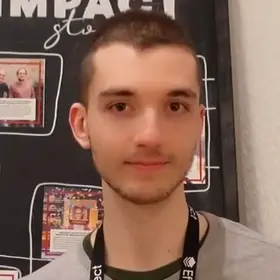Full sprint on Open Source this week for fpdart v2 🚀
fpdart at a glance:
- Flutter Favorite
- Nearly 500 ⭐️ on Github and 750 👍 on pub.dev
- Nearly 3'000 "used by" on Github
This is what it takes to be an Open Source maintainer (my perspective 💁🏼♂️)
Choose carefully
First warning for people interested in publishing their own open source project: choose carefully 😅
I don't think many developers realize how stressful being an open-source maintainer can be. You provide countless hours of work and support, for *free*. And devs will still complain and unfairly criticize your work. But the ones that are appreciative keep us going.
My rule before publishing:
Am I seeing myself working and maintaining this project long-term (years) [for free]?
Go ahead only if the answer is absolutely yes 🔥
How fpdart came to be
This is how the stars aligned:
- I was working on Flutter a lot
- I was learning functional programming
- I was using
dartzand reading its internal code quite a lot
👉 Will I use Flutter years from now? That's the intention.
👉 Will I use functional programming years from now? Absolutely.
How can I combine these 2 interests? Easy, let's write my own functional programming library in dart 🪄
You can read the full story in The History of fpdart
There is more 🤩
Every week I dive headfirst into a topic, uncovering every hidden nook and shadow, to deliver you the most interesting insights
Not convinced? Well, let me tell you more about it
Where to start
The best tool for an open source maintainer is called prerelease (dev, alpha, beta).
Start by sketching something that works, and push out with a "prerelease" warning 💁🏼♂️
This is where you are allowed to make mistakes, break things, refactor everything (basically the best part of the job 😎).
How to continue
Code is only the first (rather small) step. What's next:
- Documentation
- Testing
- Tutorials
- User feedback
Important: These are not secondary considerations, these are the core of maintaining and open source project 🛠️
These steps will take more time than coding itself:
- Make sure people know how to use the library (documentation)
- Make sure the library works as expected (testing)
How to end
When the following happens:
- Everything (nearly) is tested
- Everything (hopefully) is documented
- People are using the library with success
Only then it's time to remove the "prerelease" and push out as "stable".
Once in "stable" there is less room for changes: people are using the library in production systems, less time to address breaking changes 💁🏼♂️
And back again
The work continues. More documentation, more tests, more support (issues and user feedback).
Example: fpdart
- First release 28 May 2021 (3 years ago): just an "experiment"
- Initial interest: "this looks like a good alternative to
dartz" 🤔 - Documentation: tutorial articles and API reference
- More interest and initial external contributors
- v1 release: first "stable"
- Flutter Favorite (2.5 years later)
- v2 🔜
Check out the PR preview for fpdart v2
It's not just coding at the end. It looks more like being an entrepreneur 💡
The path is long, but it can be super rewarding and it will teach you way more than just being a consumer of other packages.
Give it a try (or contribute to existing projects 🚀)
See you next 👋
